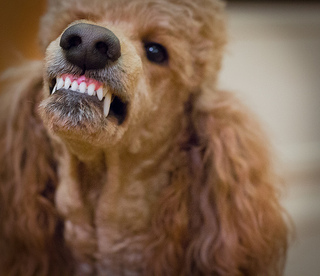
The best advice we can give you is to start as early as possible! Brushing your dog’s teeth is likely to not start as a walk in the park, but that’s okay. With the right amount of love and patience, you might actually be able to convince your dog that it’s an OK experience that involves a treat at the end.
Human toothbrushes are OK, but human toothpaste is not. Fluoride is extremely poisonous for your dog, so stop by your local pet store and pick up a kit for your pet. Daily brushing is the ideal, but if there is no way you can make that work for you, try to do it 3-4x a day.
If you’ve just adopted your dog, chances are he hasn’t had the best dental hygiene experiences in the past, so let him get used to the smell and feel of the toothbrush. There are flavored toothpastes that your dog might love, so take your time. If you can exercise him before trying it, he might even be more prone to sitting and letting you do what you need to do.
Try to brush in a circular motion at a 45 degree angle to get by the gum line. While your dog is less prone to cavities than we are, teeth problems for him can cause major problems with his internal organs. So while this will likely be a trying exercise for awhile, put in the time to do it.
A professional should check your dog’s mouth – just like a routine vet visit – every 6-12 months. They would be able to tell you if the growth or redness means anything. If you have a concern about what’s happening in your dog’s mouth, however, don’t hesitate to see a doggie dental professional. Offensive breath, swollen gums, growths in the mouth – especially accompanied by vomiting or other out of the ordinary behaviors – can mean bad news, so don’t delay in taking your dog in.
The routine brushing of your dog’s teeth might not have been something you counted on at the beginning, but in the end, it will help keep him healthy longer and extend the quality and quantity of his life.
